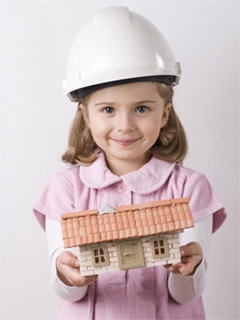Not too long ago, homeowners had two choices for their kitchen remodel when it came to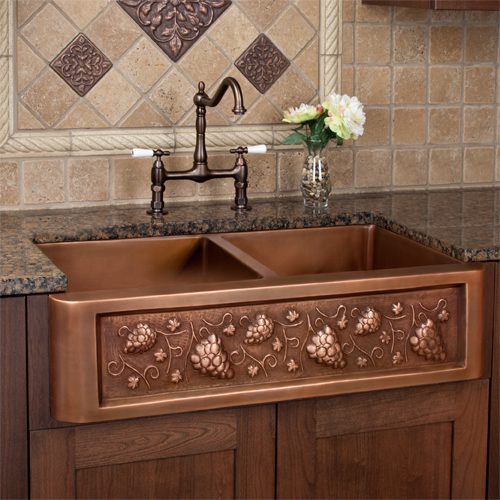 selecting a new kitchen sink — cast iron or stainless. There were few choices of colors or shapes, and certainly no options for any customized sink accessories. So today’s myriad of sink choices for a kitchen remodel come as a refreshing change to those who want to personalize their kitchen. The only problem now is that there are so many choices when it comes to picking out a kitchen sink — that it may be overwhelming.
selecting a new kitchen sink — cast iron or stainless. There were few choices of colors or shapes, and certainly no options for any customized sink accessories. So today’s myriad of sink choices for a kitchen remodel come as a refreshing change to those who want to personalize their kitchen. The only problem now is that there are so many choices when it comes to picking out a kitchen sink — that it may be overwhelming.
Surveys for sink shoppers show that most don’t understand the different materials from which each sink is made, the durability of all these materials, and what the various price points mean. Educating yourself and knowing all the options will help you determine which sink style, color and material is best — after all, it’s often the centerpiece of the kitchen. So how can you become a smart “sink” shopper and make sense out of all those sink styles that await you at your local DIY retail outlet or plumbing showroom? The following will help you get over that ‘sinking’ feeling.
Stainless Steel
Stainless steel is still the most popular kitchen sink style, claiming 57 percent of the market. For those on a tight budget, stainless steel provides the lowest price point, with some models starting at $100. There are two main things to look for in choosing a stainless steel sink: 1) the thickness or gauge of the steel; and 2) the sound deadening ability (which determines how loud the noise is when something is dropped into the sink, such as a piece of silverware).
In gauges, it is important to remember that the lower the number, the thicker the steel and hence the higher quality sink. For example, an 18-gauge sink is more durable than a 23-gauge model. And, for increased sound deadening, look for spray coatings and special sound pads underneath the bowl. These items also provide condensation control on the sink.
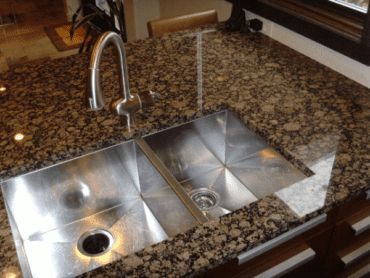 Of course, dent resistance and general durability of a particular sink will be directly related to the gauge of steel used, but in general, stainless sinks can be prone to scratching and water spotting. To combat potential negative aspects of stainless, choose a model with a satin texture finish. Stainless sinks are very popular in today’s modern kitchens because they provide a perfect match to commercial-styled appliances. And, many of the latest models are available in innovative shapes that allow homeowners to customize a sink configuration. Overall, stainless sinks offer many benefits including resistance to chipping, cracking or peeling. They are available in both undermount and drop-in models.
Of course, dent resistance and general durability of a particular sink will be directly related to the gauge of steel used, but in general, stainless sinks can be prone to scratching and water spotting. To combat potential negative aspects of stainless, choose a model with a satin texture finish. Stainless sinks are very popular in today’s modern kitchens because they provide a perfect match to commercial-styled appliances. And, many of the latest models are available in innovative shapes that allow homeowners to customize a sink configuration. Overall, stainless sinks offer many benefits including resistance to chipping, cracking or peeling. They are available in both undermount and drop-in models.
Cast Iron Sinks
If you have an older kitchen that hasn’t been through a remodel, there is a good chance that you have a cast iron sink. These sinks feature an iron base coated with an enamel finish. Although the latest cast iron sinks come in an array of colors, the main disadvantage is that they can chip or scratch, exposing the black surface underneath. When this surface is exposed, it can often lead to rusting. In addition, due to cast iron’s high degree of thermal conductivity, hot water does not hold its temperatures for very long.
When it comes to installation, cast iron is one of the most difficult because these sinks are heavy and bulky in nature. Also, cast iron offers a very limited amount of undermount installation options. Some homeowners still prefer cast iron because of the authenticity it lends to older homes, its glossy finish, and its stain resistance.
Composite
The use of composite kitchen sinks is growing rapidly. But, because there are many types of composite sinks, there is much confusion in differentiating one from another. In general, there are three main types: polyester/acrylic, quartz composite and granite-based.
Polyester/Acrylic
Of all the types of composite sinks available, polyester/acrylic are the lowest performing in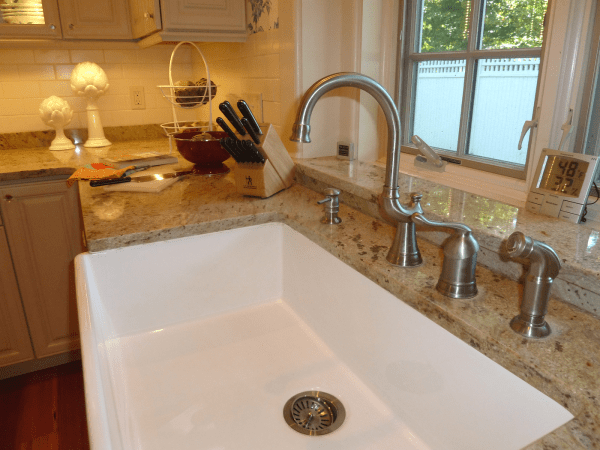 terms of scratch and stain resistance, as they are made from soft materials that can cut and nick easily.
terms of scratch and stain resistance, as they are made from soft materials that can cut and nick easily.
On the positive side, polyester/acrylic based composites tend to have a “shiny” look, which appeals to many homeowners because they brighten up a kitchen. They are also popular because they come in a variety of colors. These composite sinks also have an affordable price for those who need to adhere to a strict budget.
Quartz Composite
With a combination of 70 percent quartz and 30 percent resin filler, quartz composite sinks provide a much more durable surface than do polyester/acrylic. These sinks can resist everyday cuts, scuffs and dents and can easily stand up to harsh cleaning materials or liquids that can stain other sinks.
Quartz composite sinks are available in a variety of colors. Since the color is uniform throughout, the material never loses its original color. At affordable prices, these composite sinks are available in many popular configurations such as big/medium bowls and many offer matching bar and preparatory sinks. Composite sinks can easily be mounted from either above or below the counter. The only drawback to this type of sink is that with some styles, consumers may give up some of the glossy finish that they would get from a cast iron sink.
Granite-Based
The most scratch resistant sink material on the market today is a “granite” composite. Although you might pay a premium price for these sinks, they offer extreme chemical and scratch resistance. These sinks offer the highest level of durability thanks to an extremely high density of rock particles at the sink’s surface. Since granite-based sinks are only available 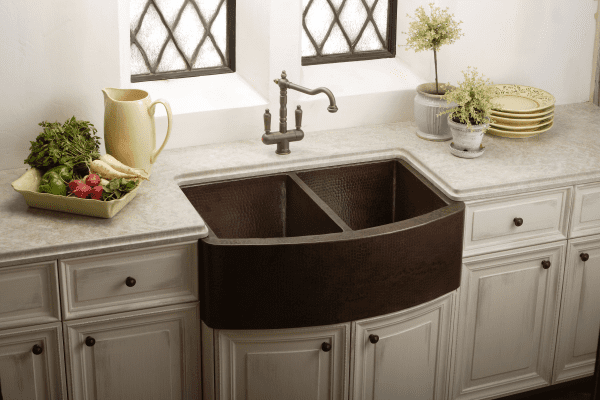 in matte finishes, consumers who prefer a glossy look should explore other composite options.
in matte finishes, consumers who prefer a glossy look should explore other composite options.
Solid Surface
Solid surface sinks have become increasingly popular because of their ability to be one, integral unit with the countertop. This is an attractive option for those who want a clean surface with no exposed edges from countertop to sink.
There is a misconception though with solid surface sinks — many think that solid surface materials are some of the hardest sink materials on the market, but in actuality they are softer than the quartz composite sink. The acrylic polymer composing the sink can nick, scratch and dent, but can be repaired. However, the repair process may be too difficult for a do-it-yourselfer and require a professional’s visit. Although they can be cost prohibitive for some, solid surface sinks do offer excellent resistance to heat and light exposure and are easy to maintain.
Once you have decided on your perfect sink, don’t forget the many optional accessories available including form-fitting cutting boards, drying racks and colander baskets. Some of the high-end models may even have a recycling chute. Most sinks also have optional knockouts for such convenient attachments as lotion or soap dispensers and a pullout spray.
As a Design+Build General Contractor, I offer my clients a one-stop shopping approach to all of their home remodeling projects. I work with my clients from initial conception of a project through its completion. Every aspect of the job is managed by me and my professional crew. You will be included in every step of the design process until the final drawings are completed. No detail is left to chance. General Contractor Specializing in Kitchen & Bathroom Design and Remodeling Throughout the Los Angeles area.
Written By:

Offer Steuer
President
OTM Designs & Remodeling, Inc.
For more information you may contact us via email at service@otm1designs.com or you may call us at 888-981-1415. Our website is www.otm1designs.com.


